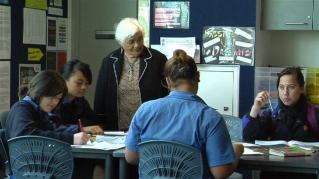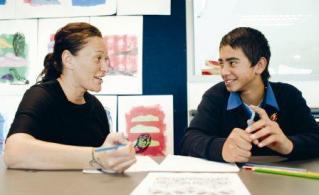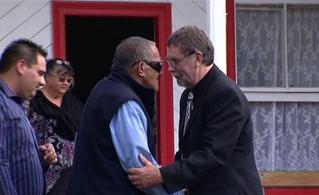Transcript
Narration
It’s not enough to invite the community to come to you – you have to go into the community. At Hiruharama School every Friday, senior students, the principal and whānau are involved in the delivery of meals-on-wheels to the kuia and kaumatua in the area. This is more than just community service. Students are learning about commitment, the logistics involved, and perhaps most valuable are the communication skills developed by the children.
Bill Hughes– Principal, Hiruharama School
We had a papa who had lost a wife a couple of years ago, and he was helping us out with some fundraising. And just in conversation he said that he didn’t cook meals for himself at night. And basically from that it has grown to 15-plus nannies and papas. And the whānau contribute the kai; the whānau cook the kai; and then we distribute it on a Friday to 15-plus nannies and papas. We try to get the children involved in preparing the kai and also delivering the kai. And we really want our children to acknowledge their pakeke, because I really believe that there is wisdom in our pakeke.
Once a term, we invite the nannies and papas into school. And so we... not only do we invite the nannies and papas who live alone, and we take meals on wheels to, but we also invite the nannies and papas who have a connection to our school. It’s not a school here and the community out there. That we would like to think that it’s a very fluid sort of arrangement.
I guess too, that they see the way that the staff and their parents honour and serve our pakeke that it doesn’t just... you can’t teach that. It’s got to be... it’s almost like through osmosis.
Ngahuia Ngata – Chair BOT, Bay Area School
My own experience has told me that parents and whānau make a difference in kids lives and in their children’s lives, and the adults they become – but specifically in their learning.
Mason Durie – Deputy Vice Chancellor Māori, Massey University
The risks of not being able to engage with whānau and with the community are two parallel pathways that don’t intersect, and somewhere caught in the middle of those pathways is a learner. And I think that can lead to a bad outcome, a bad learning outcome, for someone who is in the middle of two expectations, and two realities that never seem to come together.
Keriana Tawhiwhirangi – Director, Principals’ Development Association
The challenge too for schools is that, if they know what they have to do, are they really prepared to act differently to do it? And that’s the key question. What kinds of things are they going to do differently on Monday to step up, to ensure that they are doing as much as they can to lift these students, with the help of their whānau engagement, to have high quality outcomes?





